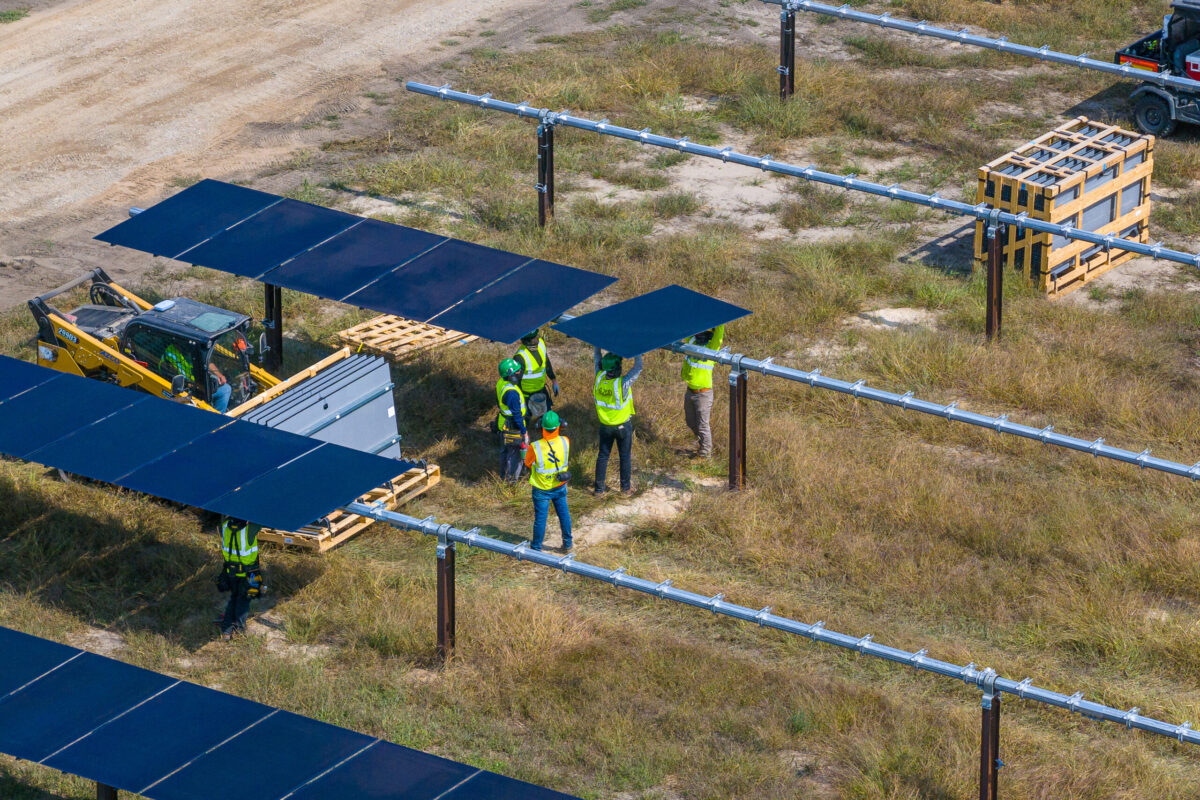The U.S. Department of Agriculture has invited rural electric cooperative utilities and stakeholders to help design a $9.7 billion renewables-focused program funded by the Inflation Reduction Act (IRA).
The program will make loans and grants for rural electric cooperatives to purchase renewable energy, renewable energy systems, zero-emission systems and carbon capture and storage systems, with grants covering no more than 25% of the project cost, under IRA section 22004.
The program’s $9.7 billion of financial support will be available through 2031, to support the long-term resiliency, reliability and affordability of rural electric systems, and to “achieve the greatest reduction” in carbon dioxide, methane and nitrous oxide emissions.
The Rural Power Coalition said in a statement that the program will allow for rural electric cooperatives to replace coal plants, through investments in renewable energy, battery storage, and improvements to generation and transmission efficiency. While the program allows for carbon capture and nuclear generation projects, the coalition said “these are less desirable options for member-owners to obtain an affordable clean energy future.”
The USDA’s Rural Utility Service, which will implement the program, is now holding listening sessions. The Rural Power Coalition expects USDA to announce a rulemaking process in the coming months, which it said “will require public input from rural communities across the country.”
$1 billion more from USDA
The Rural Utility Service will also administer a $1 billion loan program through 2031 for renewable energy and associated energy storage projects.
Loan recipients will be eligible for loan forgiveness of up to 50% of the loan, based on how the borrower and project meet the terms for loan forgiveness, under IRA section 22001.
The Rural Power Coalition said the program will aid rural electric cooperatives that are “minimally taxed,” and thus cannot directly receive tax credits for wind and solar developments. Under the IRA, these cooperatives may now receive a direct payment from the federal government rather than a tax credit, the coalition said, which thus “opens the door for new clean energy investments.”
The coalition expects USDA to announce its rulemaking process for the program in the coming months.
$1 billion from DOE
A third program, to provide $1 billion to “improve energy systems” in areas with fewer than 10,000 people, will be administered by the U.S. Department of Energy (DOE).
The program, known as “Energy Improvements in Rural or Remote Areas,” will help energy systems in these areas become more resilient to the effects of climate change, while achieving public health benefits and lower costs from “cleaner, more efficient energy,” said a DOE statement.
The program is funded by the Bipartisan Infrastructure Law, and will provide support for projects including new or upgraded transmission and distribution lines, new or modernized electric generation, microgrids, and energy efficiency. According to the Solar Energy Industries Association (SEIA), DOE is interested in demonstration projects.
DOE issued a request for information seeking public input for the program in October, and expects to announce a funding opportunity to solicit project proposals this year.
SEIA is offering a webinar on the program on February 2.
This content is protected by copyright and may not be reused. If you want to cooperate with us and would like to reuse some of our content, please contact: editors@pv-magazine.com.








By submitting this form you agree to pv magazine using your data for the purposes of publishing your comment.
Your personal data will only be disclosed or otherwise transmitted to third parties for the purposes of spam filtering or if this is necessary for technical maintenance of the website. Any other transfer to third parties will not take place unless this is justified on the basis of applicable data protection regulations or if pv magazine is legally obliged to do so.
You may revoke this consent at any time with effect for the future, in which case your personal data will be deleted immediately. Otherwise, your data will be deleted if pv magazine has processed your request or the purpose of data storage is fulfilled.
Further information on data privacy can be found in our Data Protection Policy.